How Important Is Qualifying At KOH
Prior to 2012, King of the Hammers starting positions were determined by random draw. This may seem unfathomable to some, but consider that it took 45 years before SCORE implemented qualifying to determine the starting order of the Baja 1000. The results there have been dramatic, with Rob MacCachren winning the Baja 1000 for the past three consecutive years after qualifying in the top five each year. King of the Hammers is not Baja though.
While some factors, such as the need to pass competitors in blinding dust, are shared between the two races, the Baja 1000 does not suffer from traffic jams on Sledgehammer. The Baja 1000 is a point-to-point race (even when it starts and ends in Ensenada, it is only one lap) while the Nitto King of the Hammers race typically consists of three laps; one long desert loop followed by two laps through the infamous Hammers rockcrawling canyons.
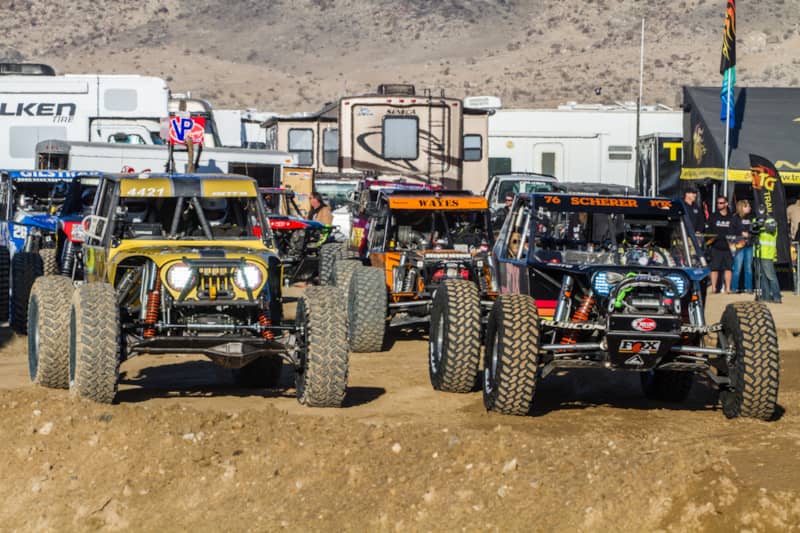
If you wait long enough at KOH, over half the competition can be passed while they are sitting on the side of the trail with their hood up and their helmets off. To determine the true importance of qualifying at the Nitto King of the Hammers, we asked some of the top drivers in Ultra4 racing, and looked back at results from past races.
To Risk More or Less?
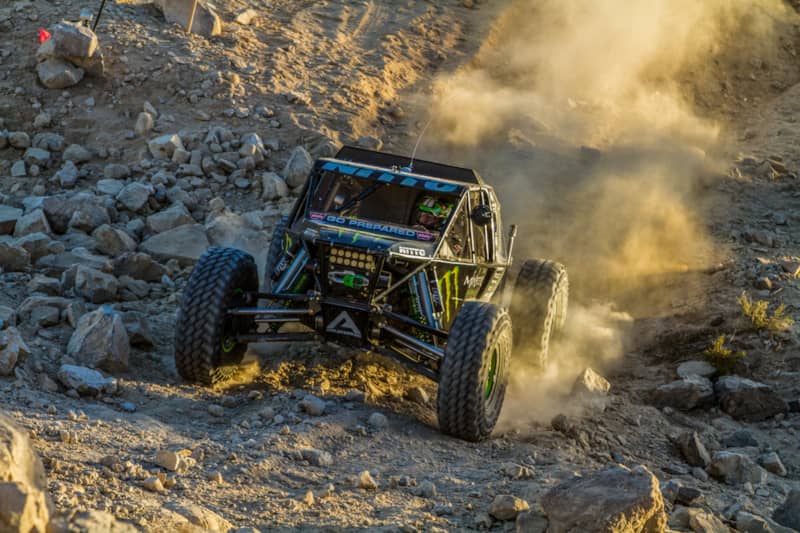
Back in 2008, Shannon Campbell started last and still physically passed every other competitor to cross the finish line first. It was a result so dramatic that if you witnessed it in a movie you would dismiss it as fake, but Shannon Campbell pulled it off, adding a big page to his storied racing history. The race only had 44 entries back then though, and the thought of such a thing happening today is farfetched. Or is it?
After a rollover in qualifying pushed him back to the 95th starting position last year, Tom Wayes passed nearly all the field and had a big lead in corrected time before succumbing to mechanical issues. And Shannon Campbell started 62nd in 2011, when he became the only competitor ever to win King of the Hammers in an IFS buggy. “It isn’t impossible, but it is more difficult when you start in the back,” Campbell shared. “You have to take more risks when you start in the back.”
Fresh Air on the Pole
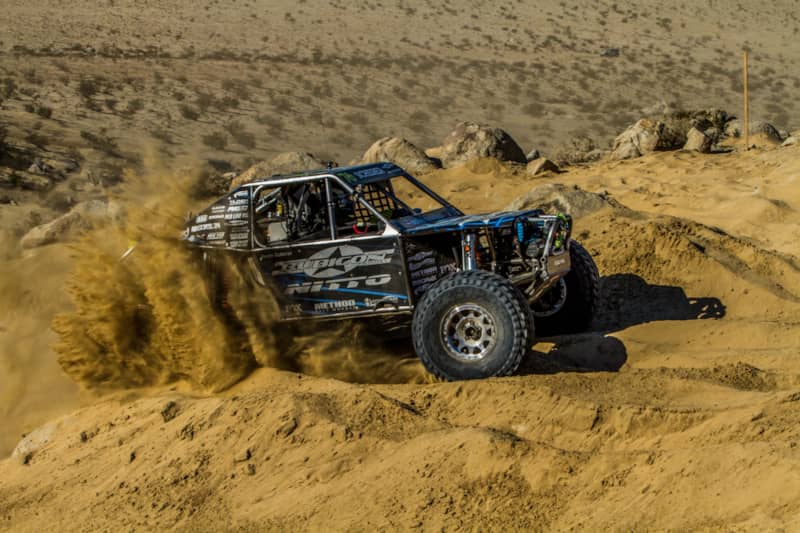
The 2009 edition of King of the Hammers was won by Jason Scherer. He started 26th out of the field of 100 cars and was physically first less than half way through the race. “I backed off towards the end of the race to save the car,” Scherer recalls. “Then my pit crew relayed that Rick Mooneyham was coming up fast. Rick had started 99th that year so even though we were ahead of him physically the race was incredibly close on corrected time.” Since that time, Jason Scherer has been Mr. Pole Position, qualifying first on three of the last five years. “Fresh air is important, particularly in a single seat car where you don’t have someone dedicated to calling out turns on the GPS. If you start up front and you have a perfect day, no one is going to beat you. Start in the back and you can still win, but it takes some luck because other racers have greater influence on the outcome of your day.”
Letting Someone Else Set the Pace
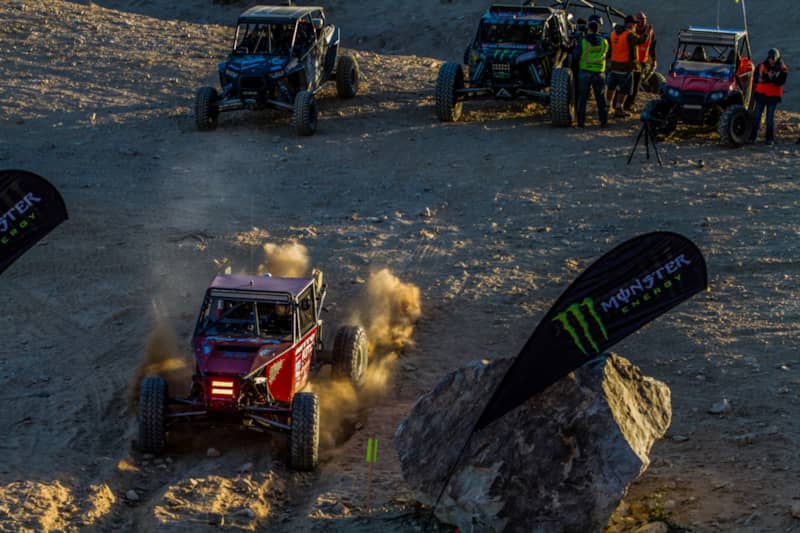
A relatively unknown Loren Healy won the race in 2010 after dramatically qualifying through the Last Chance Qualifier (LCQ). At this time the random starting order was determined prior to the LQC, and Healy was plugged into the fifth starting position for the race. He used that to his advantage, edging out Brad Lovell by a mere 28 seconds on his way to becoming one of the most dominant drivers in Ultra4 racing. Healy won again in 2014, after qualifying ninth. “I don’t necessarily like being on the pole,” Healy confessed. “I want to start towards the front, in the top ten, but I like having someone else set the pace so I know how hard I need to push my car.”
Qualifying Affords Front Row Action
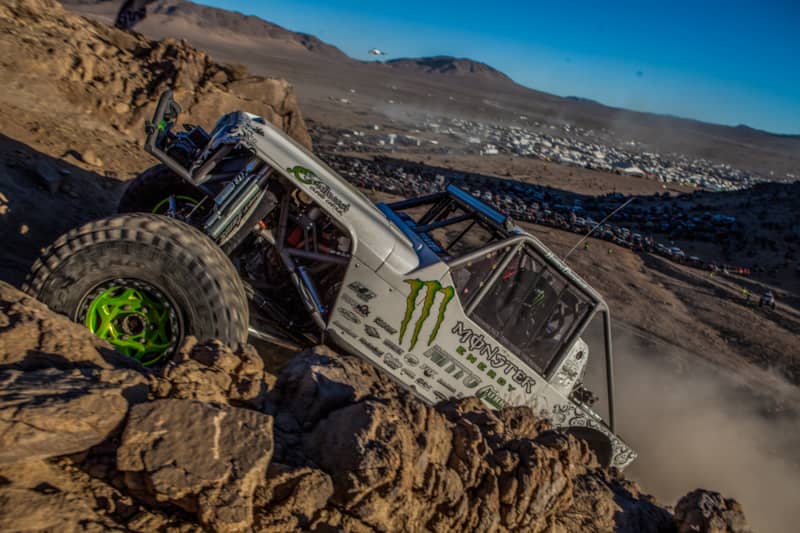
Qualifying was implemented for 2012, but promoter Dave Cole approached qualifying as much more than just a way to determine starting order. The format for qualifying allows it to take place in front of spectators and give them a taste for what Ultra4 racing is all about. High profile teams qualify at the end of the day during the “Power Hour”, which is livestreamed from the lakebed in Johnson Valley to computers and smart phones around the world. The qualifying course has changed locations over the years, but it always consists of a short loop that can be completed in a matter of minutes. Whether on Chocolate Thunder or west of Hammertown, the qualifying course contains both challenging rock obstacles and high speed sections to represent a much scaled-down KOH course.
Differing Race Day Strategies From Front or Back of Pack
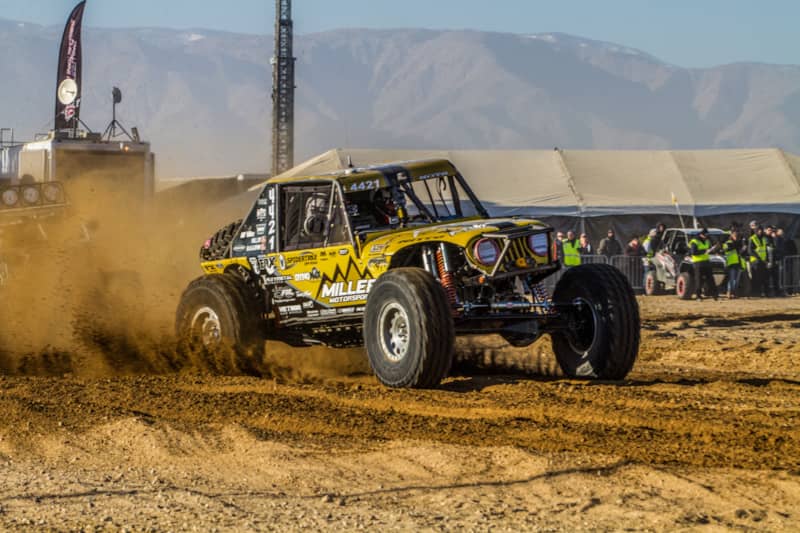
That first year qualifying was implemented, a young guy from the East Coast qualified fourth, behind Rick Mooneyham, Nick Nelson, and Shannon Campbell. And just ahead of racing legend Robby Gordon. Erik Miller went on to win in 2012, and believes that qualifying was an important part of that victory. “Above all, qualifying makes the race so much safer,” Miller explained. “The speeds of competitors are widely varying, and qualifying groups the fast guys at the front so you don’t have someone doing 100 mph through the desert in the dust of a car going 40 mph.” Last year, Miller made an error in qualifying that pushed him back to the 27th starting position. “It isn’t impossible to win from the back, but it is much more difficult,” he concedes. “There is enough time to work your way up to the front of the pack at King of the Hammers, that isn’t the case at short course races such as the Stampede or the Nitto Nationals in Reno.”
Letting Elapsed Time Be Your Friend
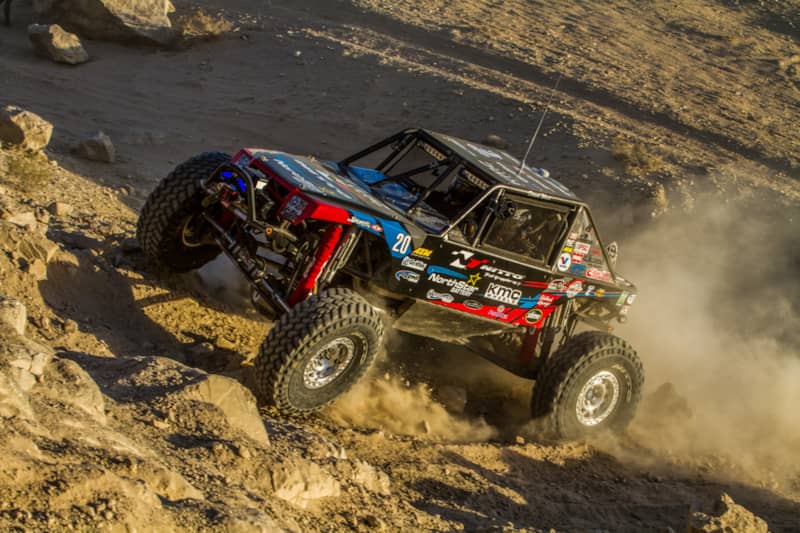
One competitor who has done consistently well at King of the Hammers, no matter where he starts, is Derek West. “I think I started 44th or 48th one year, that is the furthest back I've started. Last year I started third, which is the best I've ever started.” West’s approach to starting position is somewhat unconventional; he sees an advantage to starting further back in the field. “The way the race is setup, starting 50th is really not that big of a deal, assuming you have the means to be able to pass a good portion of those in front of you before the first rock section. Starting further back actually allows you to sneak up on your competitors and nobody pays that much attention because you are physically behind them.” That was how Tom Wayes’ race was playing out last year prior to his breakage. The drivers we talked to had differing opinions as to whether Wayes would have suffered the same fate if he started at the front of the pack. “Wayes only has one speed: wide open,” explained his good friend Jason Scherer. “He is going to drive the same way no matter where he starts.”
Whatever approach drivers take, wherever they qualify this week, all of them will be giving it their all to be crowned the 2017 King of the Hammers this coming Friday.







